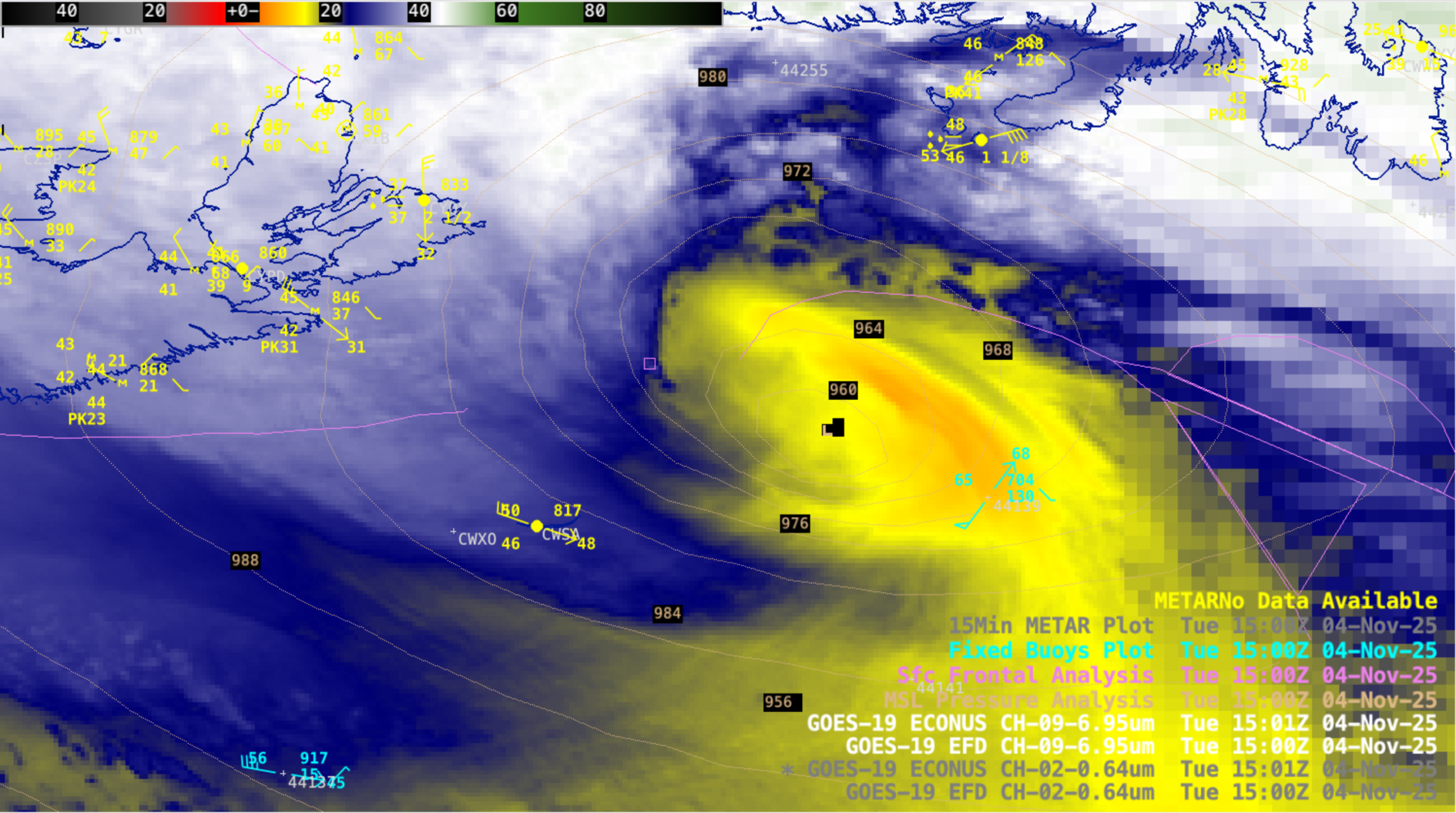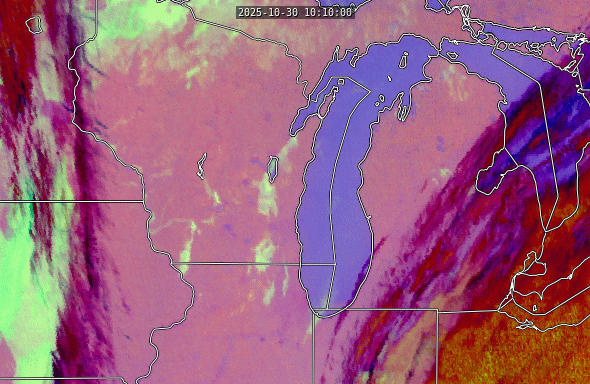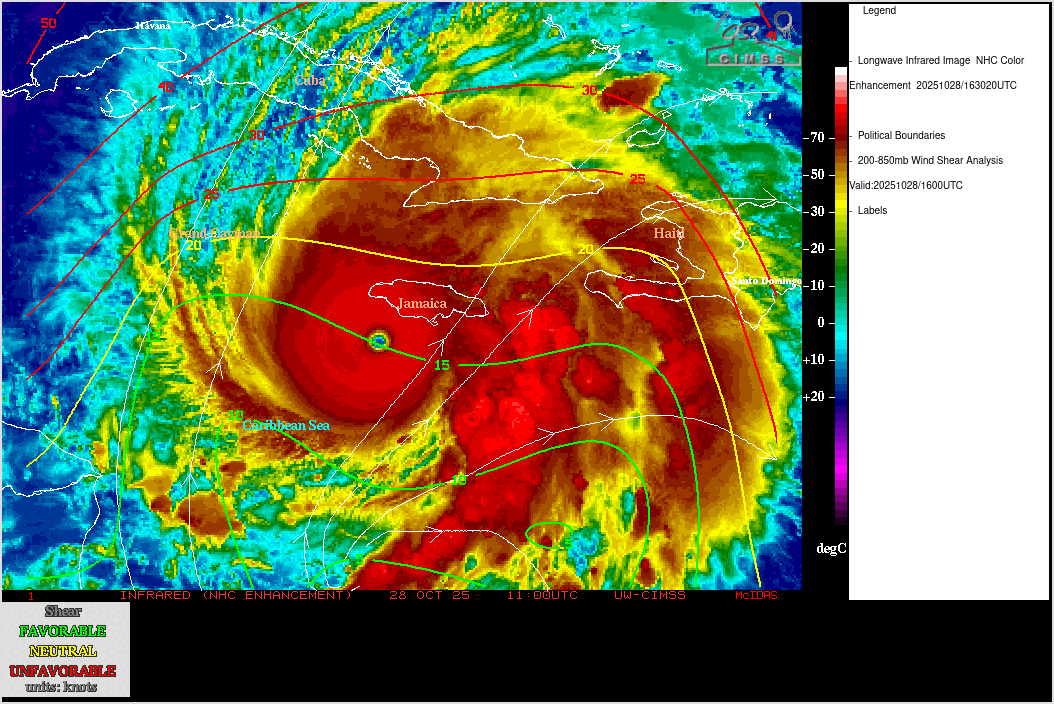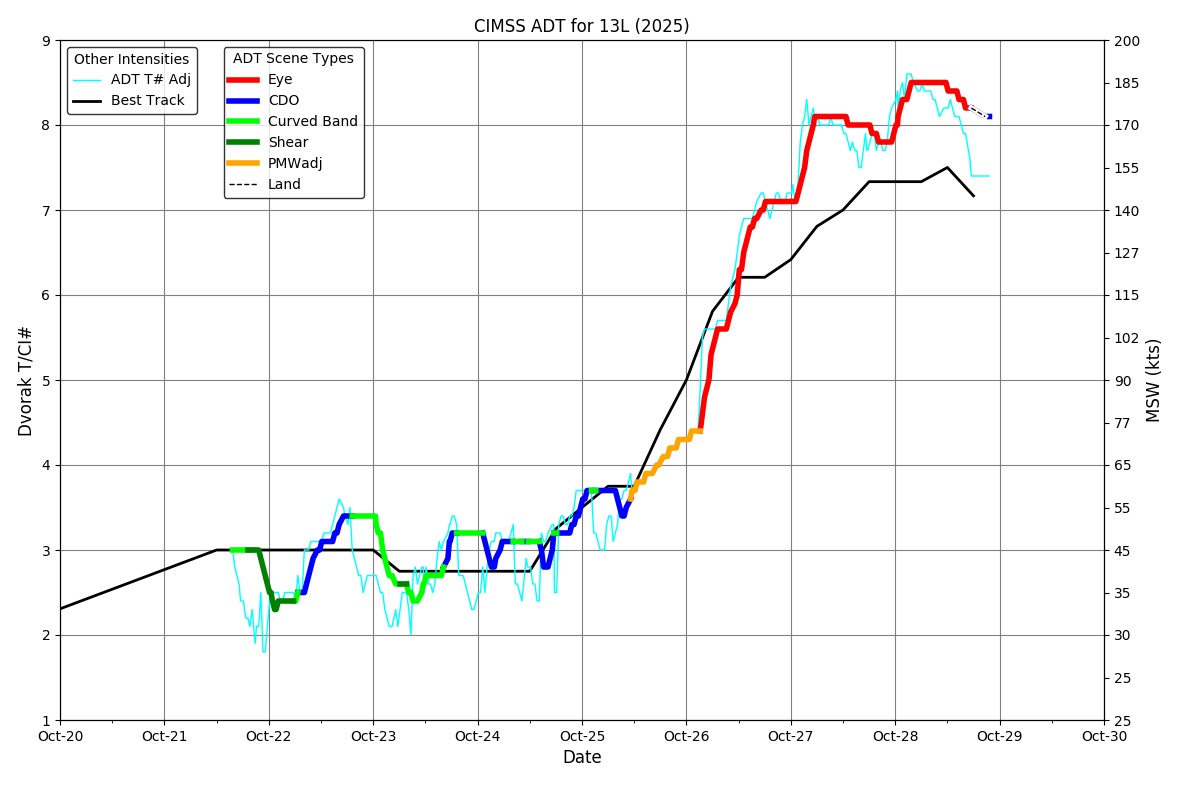A UPS freight plane crashed on takeoff from UPS’s home base in Louisville, Kentucky on 4 November 2025. The plane was bound for Honolulu, Hawaii, and thus had a significant quantity of fuel on board. Eyewitness videos showed a large fireball as the aircraft hit the ground in an industrial zone around 5:15 local time (2215 UTC) and nearby residents were told to shelter in place and turn off external air handling systems in order to protect themselves from the smoke plume.
Several GOES products are designed to monitor fires, and thus can be applied to this situation as well. the following animation shows Band 7 (3.9 microns) from the GOES-19 Advanced Baseline Imager. This band is a key component of fire detection as it is very sensitive to high temperatures. Even if a small portion of a pixel is actively burning, that will create enough emission at 3.9 microns to be detected by Band 7. The following animation shows Band 7 from 2200-2300 UTC (5:00-6:00 PM local time). The airport is located in the central part of the image due south of the central city. Note the dark spot that rapidly appears starting at 22:20 UTC. This is the signature of the initial fire, and while the hot spot fades quickly, its presence is still detectable from space for some time after.
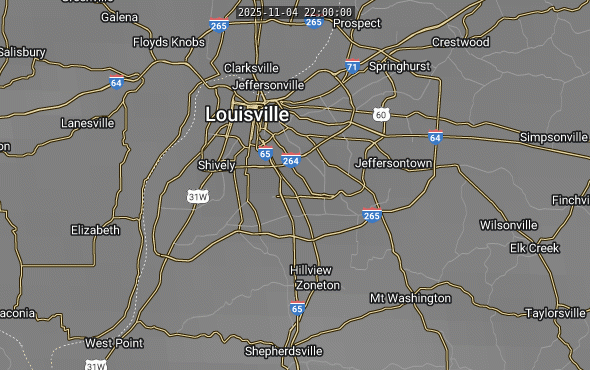
This is a tricky time of day to use many RGB products, as several of them rely on channels that are only available during the day or use channels whose interpretation change between day and night. Sunset took place just 24 minutes after the crash, and by this time the visible channels had lost their ability to show the surface. However, the fire temperature RGB can be used to detect fires both day and night. This RGB is a combination of the 1.6, 2.2, and 3.9 micron channels. Since these are shortwave channels, they are normally only used during the day as the earth’s natural emission at these wavelengths is negligible. However, fires are hot enough to produce radiant emission at these wavelengths at values that far exceed solar reflectance, and so this product can be used for fire detection 24 hours a day. The fire temperature RGB clearly shows the presence of a fire at the time the plane crashed. However, this signal does not last very long as the initial burst cools and clouds move in to obscure the surface.
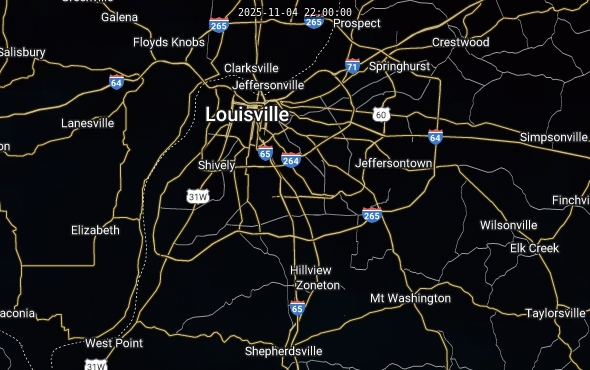
_____________________________________________

5-minute GOES-19 Microphysics RGB images with overlays of NGFS Fire Detection polygons and surface reports, from 2201 UTC on 04 November to 0041 UTC on 05 November (courtesy Scott Bachmeier, CIMSS) [click to play MP4 animation]
5-minute CONUS Sector GOES-19 (GOES-East) Microphysics RGB images and Next Generation Fire System (NGFS) Fire Detection polygons (above) displayed a pronounced thermal signature of the UPS Flight 2976 crash-related fire beginning at 2216 UTC (cursor sample) — which became less distinct as it lingered until 0036 UTC. Plots of surface observations showed that the winds were light south-southeasterly at Louisville International Airport.
The south-southeast winds from the crash site fire transported some smoke over Louisville International Airport (KSDF), but this smoke remained aloft (with its base at altitudes of 2600-3200 ft) and the surface visibility remained at 10 statute miles (below).

METAR reports at Louisville International Airport (KSDF) with remarks of smoke (FU) sky coverage and altitude highlighted in red, from 2210 UTC on 04 November to 0105 UTC on 05 November [click to enlarge]
A longer time series of KSDF surface report data (below) showed that the base of the low-altitude smoke descended from 3200 ft at 2300 UTC to 800 ft at 0800 UTC.
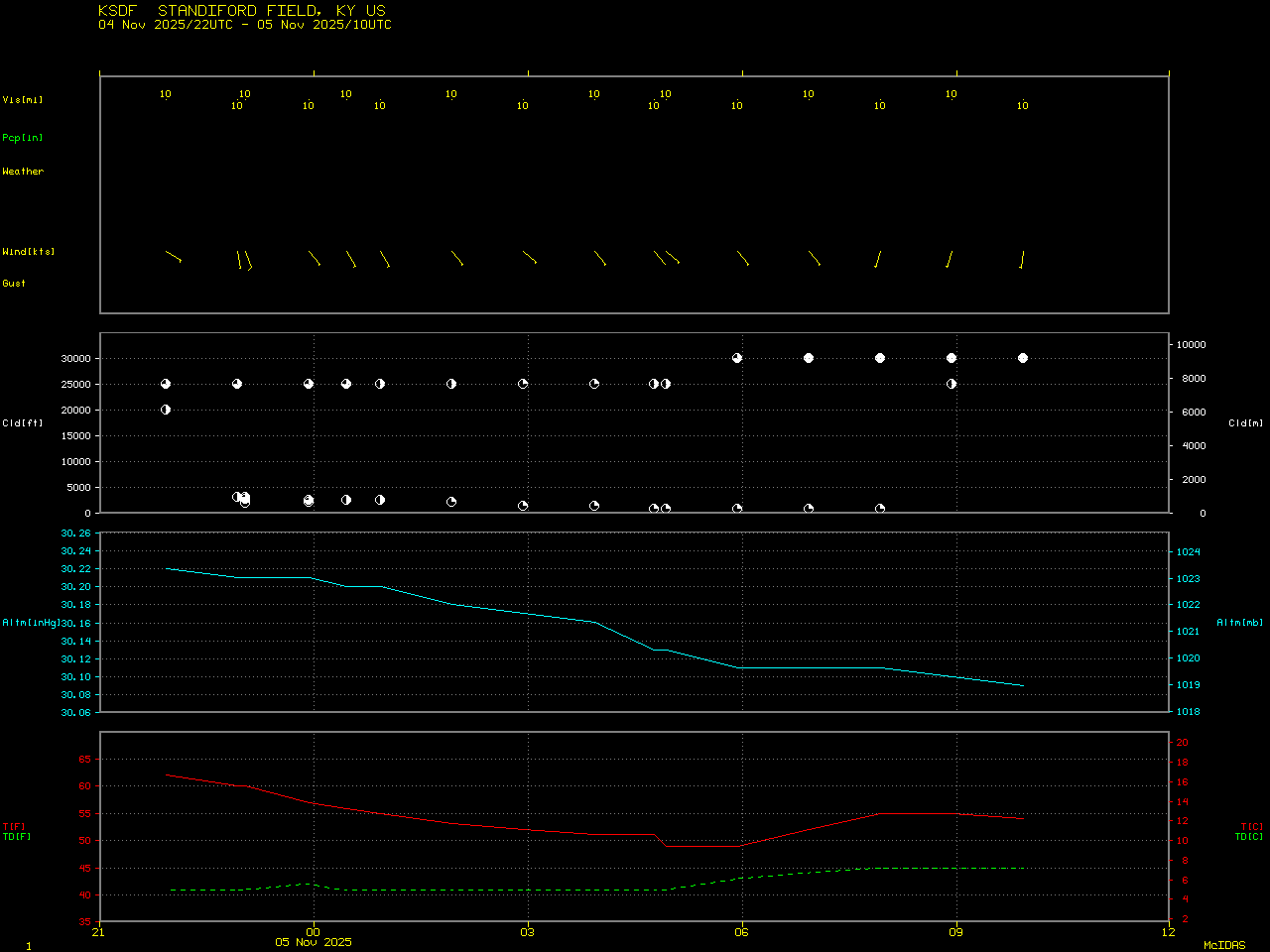
Time series of surface observation data at Louisville International Airport (KSDF), from 2200 UTC on 04 November to 1000 UTC on 05 November [click to enlarge]
In spite of a much larger viewing angle from the GOES-18 (GOES-West) satellite — 67 degrees, vs 43 degrees from GOES-19 — a thermal signature was also apparent in 10-minute Full Disk scan Microphysics RGB imagery, beginning at 2220 UTC (below). However, the GOES-18 thermal signature dissipated more quickly.

10-minute GOES-18 Microphysics RGB images with overlays of surface reports, from 2200 UTC on 04 November to 0040 UTC on 05 November (courtesy Scott Bachmeier, CIMSS) [click to play MP4 animation]
View only this post Read Less



